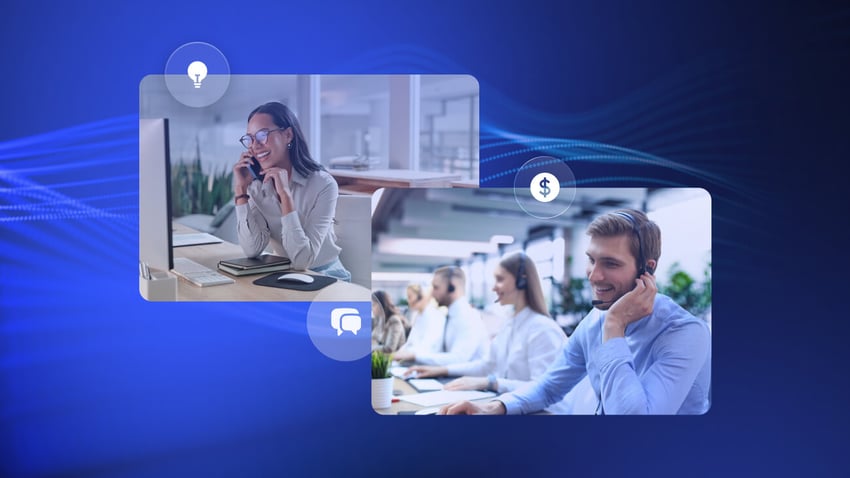If you currently focus on inbound or outbound calls only, you could be missing out on the benefits of a blended contact center, including:
- Improved customer experiences
- Boosted agent productivity
- Optimized operational efficiency
… And that’s just the start.
In this blog post, we aim to arm you with everything you need to know about blended contact centers.
So, if you’re curious about what you’re missing out on, you’ve come to the right place.
What Is a Blended Contact Center?
Blended contact centers handle both inbound and outbound customer interactions to offer ongoing support and proactive service.
This means agents can:
- Receive inbound calls, emails, chats, social media messages, etc., from customers seeking support, information, or sales.
- Initiate outbound calls for proactive customer support, sales pitches, follow-ups, or surveys.
When these interactions are combined, call center agents have a wider remit, access to more customers, and the ability to work with the same customer multiple times. Rather than a prospect or customer returning a missed call and getting someone from a different team, customer journeys can be personalized by assigning reps to open tickets.
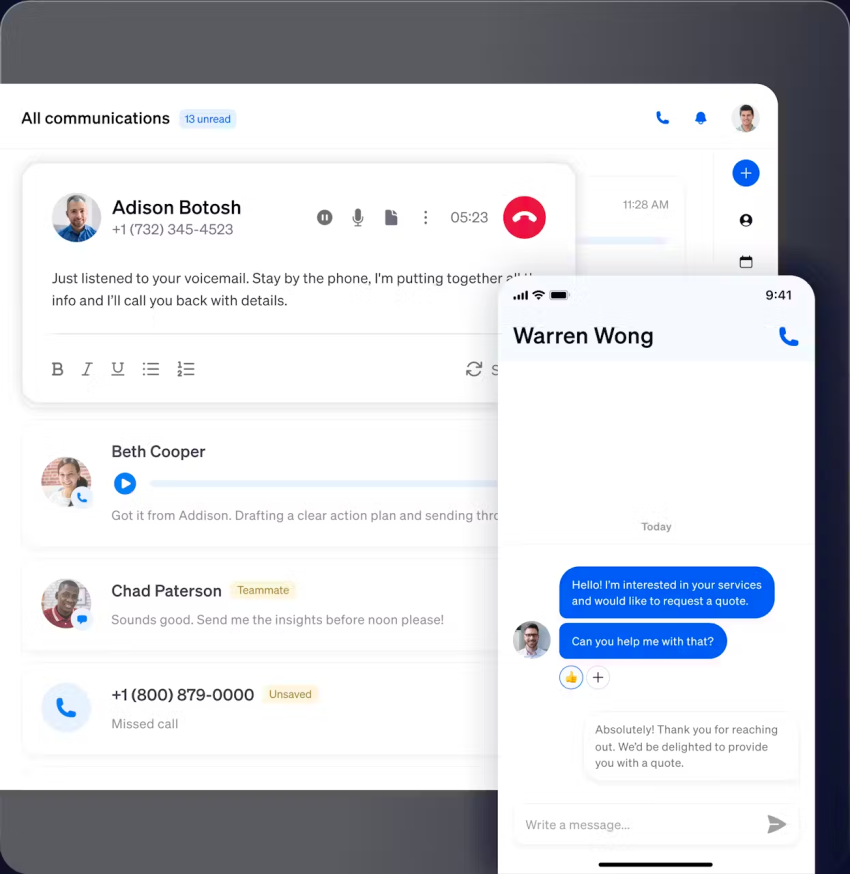
This means agents in a blended environment must have a broader skill set, including:
- Customer service expertise to handle inquiries and troubleshoot issues.
- Sales knowledge for outbound calls promoting products or services.
- Communication skills to interact across various channels.
In a blended contact center, you can turn on as much or as little functionality as you choose, such as basic two-way calling or full omnichannel capabilities.
Key features of a blended contact center
The main features of a blended contact center are specific to inbound and outbound needs, as well as adding new contact channels.
Optimizing inbound calls
You can optimize inbound calls using automatic call distribution (ACD) and interactive voice response (IVR), which route incoming calls to available agents based on skill or workload.
You can distribute calls based on caller ID, business hours, support level, and IVR selections, allowing inbound calls to reach the right agent or department quickly and without the caller having to dial a different phone number.
Imagine a customer calling about a specific appliance at a big-box store. ACD can identify keywords and use call routing to find an agent familiar with that product line, ensuring expert help on the first try.

Optimizing outbound calls
You can use auto-dialer software to improve the efficiency of your outbound campaigns. You can automate outbound calls, increasing efficiency and minimizing agent idle time.
When you start using an auto-dialer:
- Misdials become a thing of the past
- Bad contacts get archived
- Missed calls go back into the queue
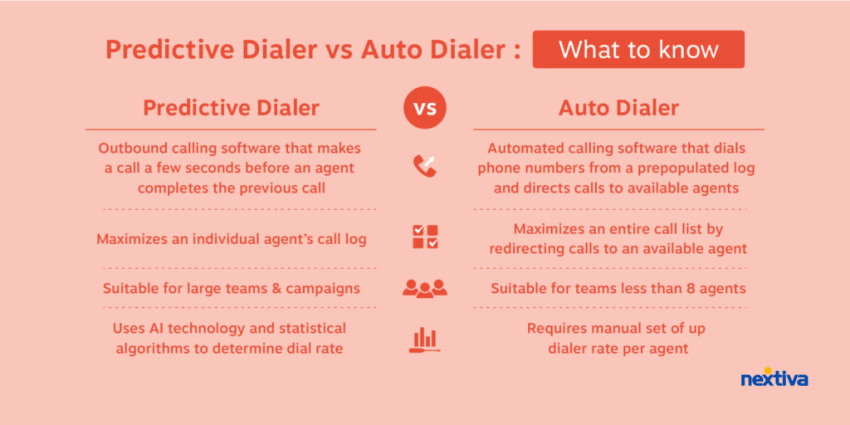
Agent productivity skyrockets because no time is lost due to manual error, as the manual tasks have been removed.
There are four different types of auto-dialer:
- Predictive dialer: Uses algorithms to know when an agent is ready to make their next call.
- Preview dialer: Shows customer information for the next call in the outbound queue.
- Power dialer: Dials from a prepopulated list.
- Progressive dialer: Combines elements of preview and power dialers. Agents get access to information before a call, and then the dialer automatically connects the call.

Related: Outbound Dialers: Benefits and Essential Use Cases
Introducing new contact channels for customers
Unify customer interactions from all channels into a single interface for agents using an omnichannel contact center, which will mean customers can contact you via:
- Phone
- Web chat
- SMS
- Social media
Agents can respond to incoming messages and calls while maintaining a holistic view of every interaction the customer has had with other agents.

If your customer called yesterday and is now following up via web chat, there’s no need to ask them to repeat their query and start over. Your agents can see the call transcript, call notes, and anything else you choose to link from your CRM.
Omnichannel enables two-way communication. Rather than just receiving emails or chats, empower your most suitable agents to respond efficiently on your customers’ channel of choice, all powered by AI.
Where does your CX strategy stand with AI?
Take the AI Maturity assessment to get personalized recommendations on how to enhance your CX.
Now we know the key features of blended contact centers, let’s translate them into benefits.
What Are the Benefits of Having a Blended Contact Center?
You’ll have access to both inbound and outbound capabilities, but what can you expect to gain from them?
Improved customer experience
- Omnichannel support: Customers can reach your business through their preferred channel (phone, email, chat) for a more convenient experience. You’re minimizing customer effort every time they need you.
- Proactive outreach: Businesses can contact customers proactively for support, account management, or satisfaction surveys. There’s no more guessing; you can rely on genuine customer feedback.
- Faster resolutions: Agents with a broader view of customer interactions can resolve issues more quickly. Removing manual search and repeated conversations speeds up first call resolution.
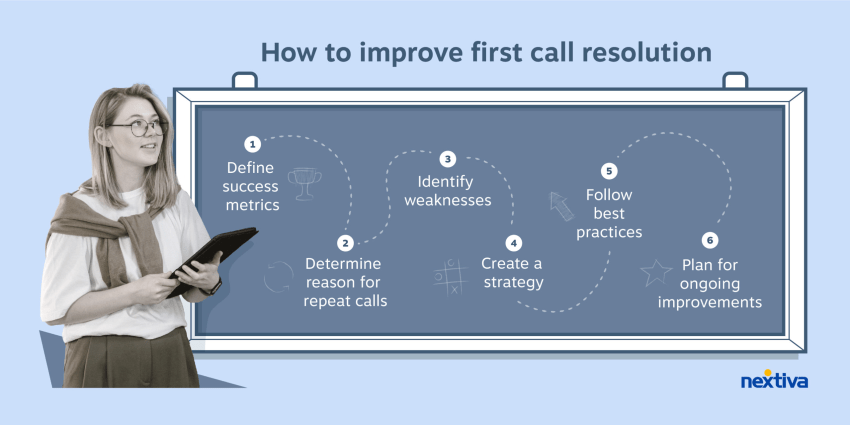
Boosted agent productivity
- Reduced idle time: Agents can handle outbound calls during lulls in inbound call volume, maximizing their productivity. You can improve agent output by upskilling them.
- Skill development: Blended environments encourage agents to develop diverse communication skills, increasing their value. The more they add to your business, the faster your return on investment.
- Increased motivation: A varied workload can be more engaging for agents than solely inbound or outbound calls. Variety is the spice of life, after all!
Optimized operational efficiency
- Centralized management: A single platform streamlines the management of all customer interactions, simplifying operations. Users no longer need to switch between apps or lose information between systems.
- Cost savings: Blended contact centers can reduce costs associated with staffing separate teams. If one staff member can do the job of two, there’s an obvious win.
- Data-driven insights: Consolidated data across channels provides valuable insights for improving customer service strategies. Everything you learn about your customers is fed into outbound campaigns and inbound support workflows.
Evaluating contact centers? Get the buyer’s guide.
This guide reveals the five pillars of a modern platform, key questions to ask, and red flags to avoid.
What Are the Challenges of a Blended Contact Center?
While blended contact centers offer advantages, they also come with a set of obstacles to overcome. The good news is they can be overcome. But it’s important to flag them so you know what you’re signing up for.
More in-depth training required
If you run an inbound- or outbound-only call center, you’re asking agents to learn new skills when moving to blended.
It’s not so much about learning how to answer the phone if they’ve been making calls for two years. It’s more about soft skills like dealing with customer issues, practicing active listening, and showing empathy. When customers initiate contact, it’s because they need something from you. A different set of communication skills is needed to deal with incoming calls.
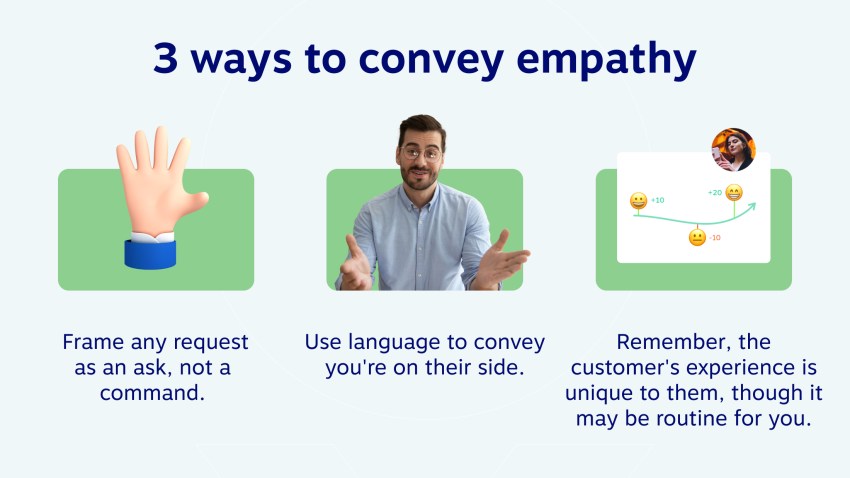
The reverse is also true. Calling customers or prospects who aren’t expecting your call isn’t as easy as saying, “Hello, how can I help?” As you’re interrupting their day, you need a different approach. You need to create urgency and value right from the start.
If you plan to add new channels like email, web chat, and social media, consider the new interfaces agents will need to learn. For example, if an agent isn’t a skilled typist, they may need to work on their written communication skills before leveling up to deal with multiple channels.
Workload management can be challenging
Balancing inbound volume and outbound demands and managing new communication channels can be tricky at first. It’s important to drip-feed new functionality to agents so they don’t become overwhelmed.
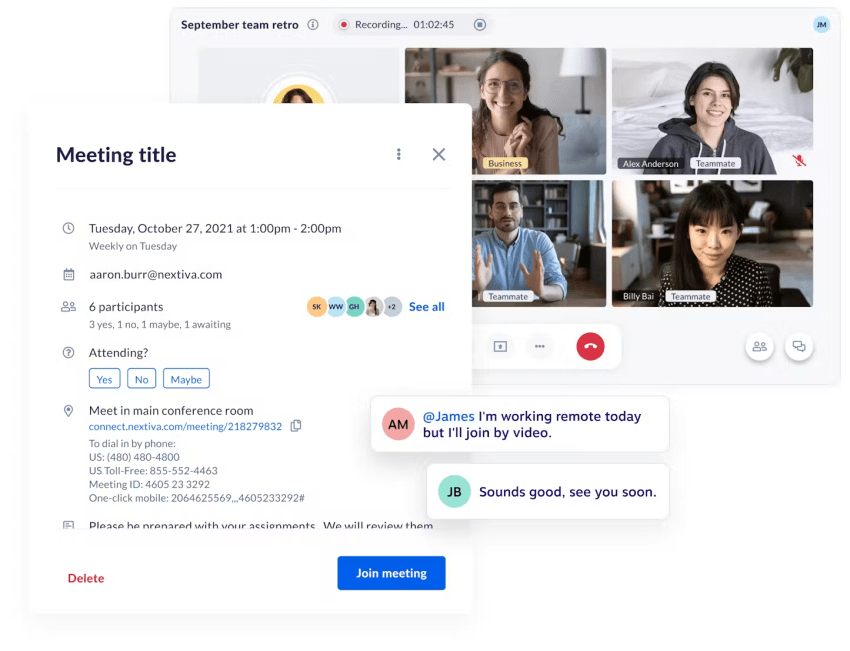
Your outbound agent will be more than happy doing their “normal job” but may struggle when asked to handle customer complaints for the first time. If you’re asking them to troubleshoot an issue with a customer’s banking app, they need sufficient training before being asked to handle those calls.
You’re subjecting them to a new call center environment, so make sure you plan for the following:
- Product training
- Instruction using examples of good calls
- New interface training
- Role-play scenarios
Murky performance tracking
You can’t just give agents new responsibilities and hope for the best. Introducing a blended contact center is the perfect time to get your contact center reporting in order.
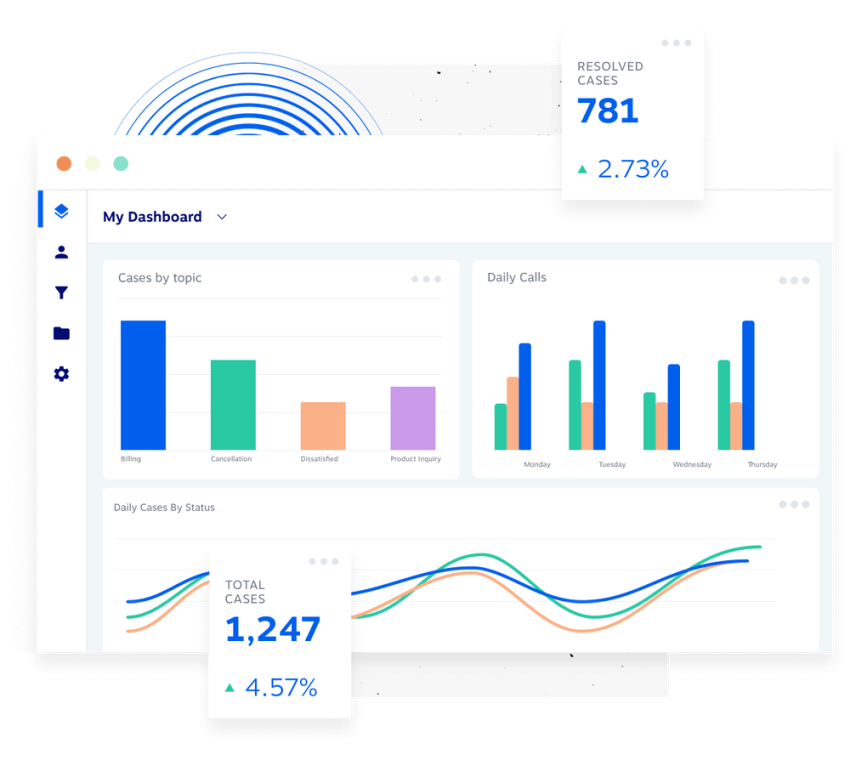
Think about agent productivity metrics like:
- Occupancy rate: The percentage of time agents are actively engaged in customer calls or other tasks.
- Average after-call work time: The time spent documenting or completing tasks after a call.
- Adherence to schedule: The percentage of time agents are available to handle calls.
- Transfer rate: The percentage of calls transferred to another agent or department.
- Resolution rate: The percentage of interactions in which the agent successfully resolves the customer’s issue.
- Average handle time: The average time, measured in minutes and seconds, that call center agents take to handle customer phone calls and other inquiries.

In a best-in-class blended contact center, expect the following as standard:
- Real-time graphs and individual agent performance reports for team managers.
- Call reports about contact reasons, dispositions, and customer satisfaction.
- Staffing forecasts and team activity reports for contact center managers.
- Customer experience KPIs and reports that support your strategic goals.
Resistance to change
When anyone, not just contact center agents, is asked to do something new, you must expect pushback.
Transitioning agents and supervisors to a blended environment requires clear communication and support, as well as motivation.
Start by describing why you’re asking for these new roles and responsibilities. Explain how they will benefit your company and customers and how they can potentially advance your employees’ careers.
Implement adoption and training incentives (similar to traditional contact center gamification techniques) to inspire staff to excel during training and maintain these new skills when dealing with customers.
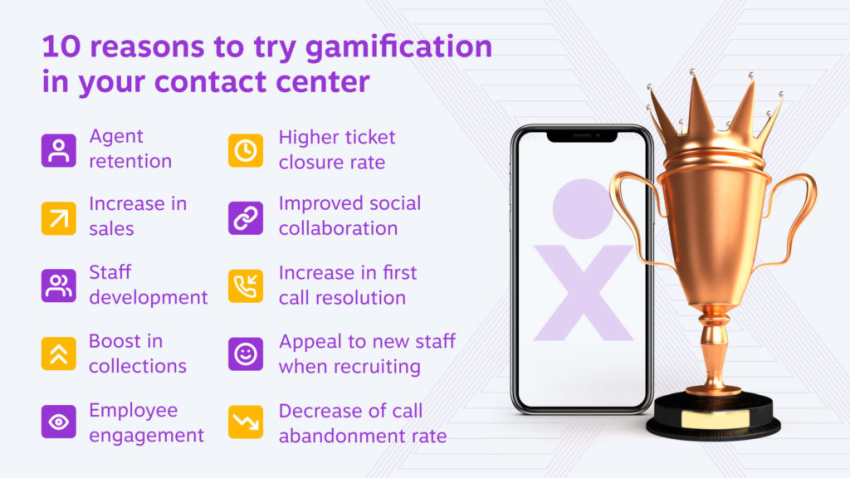
Managing expectations when shifting to a blended environment and making sure your agents are motivated (monetarily as well) to exceed performance are imperative to the success of your blended contact center, while the opposite, effectively demanding that agents start a new job, can have a severe negative impact. If an agent becomes upset, their motivation and productivity will drop.
Losing an unhappy agent further down the line results in the cost and extra time required to recruit and train a new agent. You could find yourself in a vicious circle unless you address the root causes of this turnover.
Note: This sentiment also applies when you plan to start a new call center. Failing to prepare is preparing to fail.
Interested in a Blended Contact Center? Look No Further Than Nextiva
If you need to transform your organization to one that handles both inbound and outbound calls, blended is the way to go.
By incorporating two-way communications, you improve customer experience, boost productivity, and upskill agents. You’re also optimizing operational efficiency, making blended agents more valuable, and contributing more to your bottom line.
What’s more, introducing omnichannel capabilities will delight your customers. Instead of waiting in a call queue every time they need to get hold of you, open up self-service options like web chat and provide asynchronous options like email and social media.
Placing your customers on hold until you’re ready is a thing of the past, as is asking them to repeat what they already told another agent on another contact channel.
When moving to a blended environment, you need all the key features in a single platform, which will mean:
- Managing inbound, outbound, and omnichannel from the same screen.
- Reporting on agent productivity and customer satisfaction from one app.
- Blending all your contact center management into a holistic view for agents and supervisors.
Nextiva makes this easy with its contact center solution designed for those who want to run a blended contact center without hassle, interruption, or barriers to adoption.

See why millions trust us daily.
Get all your conversations in one platform with Nextiva’s blended contact centers solutions.

















 Customer Experience
Customer Experience 










